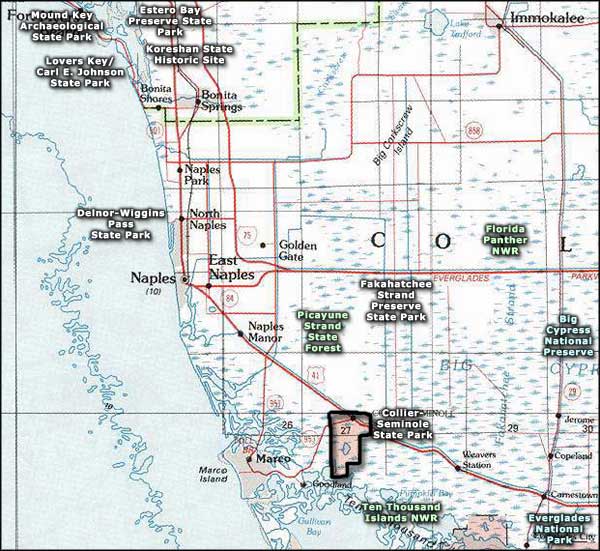Big Cypress National Preserve
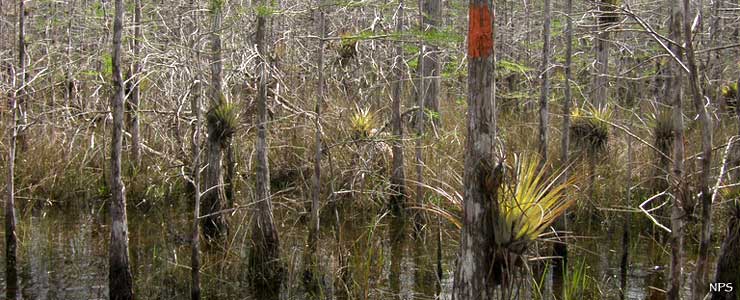
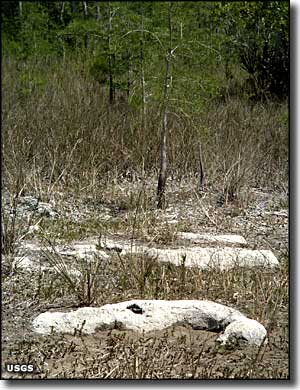
The 720,567-acre Big Cypress National Preserve is in southwestern Florida. The property was originally intended to be part of Everglades National Park but in 1947, when Everglades was being formed, Big Cypress was still in the hands of private owners. So at that time, Big Cypress was released from the National Park System and the plans for the property were put on hold. Big Cypress re-entered the system when it was declared a National Preserve in 1974. The legislation that created Big Cypress National Preserve states the preserve was created to protect the natural resources, water quality and ecological integrity of Big Cypress Swamp.
To the south of Big Cypress are the wet freshwater prairies of the Everglades, to the south and west is Ten Thousand Islands National Wildlife Refuge. Big Cypress National Preserve is a bit more elevated (and dry) than both those neighboring properties. To the west is Fakahatchee Strand Preserve State Park. Off the northwest corner of Big Cypress is the Florida Panther National Wildlife Refuge.
The Seminole and Miccosukee people have been able to keep their rights to use and occupy the land here, and they and hunters even still have the right to use off-road vehicles on the property (something not allowed in designated National Parks). Home and business owners who were established in the area prior to National Preserve designation are also allowed to continue about their business.
This is the most biologically diverse region of the "dry ground" Everglades area and is host to orchids, mangroves, cottonmouth, eastern diamondback rattlesnake, mangroves, the Florida panther, a large variety of bids and, of course, a large wet cypress forest. You'll also find endangered species like the eastern indigo snake, the Florida Sandhill Crane and the West Indian manatee in areas of the property.
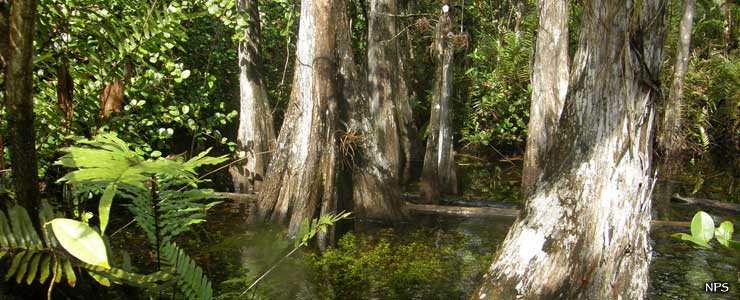
Cypress swamp at Big Cypress National Preserve
Before that National Preserve designation, timber companies operated in the area, building roads and railroads to haul out large amounts of old-growth cypress. Some of those old roads and trackbeds are still in use as ORV trails on the Preserve. This, of course, has led to controversy with ORV enthusiasts clamoring for more freedom to drive anywhere and everywhere and a whole slew of government agencies and environmental groups screaming about the amount of destruction already caused by ORV use. Despite the federal limitation to about 400 miles of trails in 2001, the Wildlife Advocacy Project claims that more than 23,000 miles of legal and illegal trails are being used.
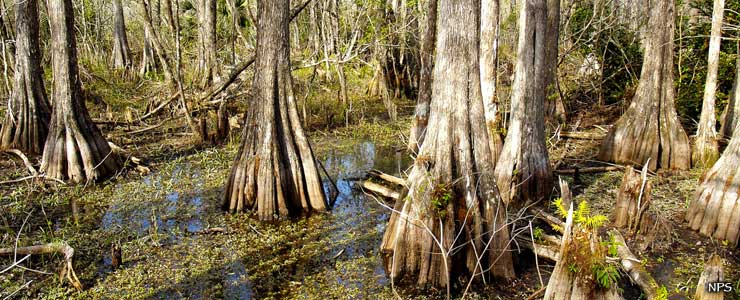
More cypress swamp at Big Cypress National Preserve
Big Cypress National Preserve offers several campgrounds for motorized camping. The Florida National Scenic Trail finds its southern terminus in Big Cypress, and winter is a good time to hike here, when the water levels are low. For hikers, getting around in the cypress country is much easier than trying to maneuver in the sawgrass prairies of the Everglades. However, there will always be places on the trails that require wading in the water and that's where you'll really begin to appreciate the number and size of the alligators who hang out there.
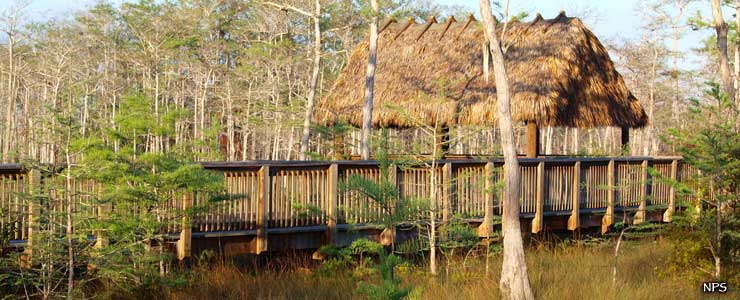
Boardwalk to an overlook at Big Cypress
There is no entrance fee to the Preserve. There are fees for processing Off-Road Vehicle permits (annual $50 fee) and for some facilities on the property. Midway Campground is a fee site all year round (RV sites $19 per site per night, tent sites $16 per site per night - use of the RV dump station included). Monument Lake Campground collects fees (RV and tent sites are $16 per site per night - use of the dump station at Midway included) from December 15 through April 15. Camping in any one spot is limited to 10 days. All prices subject to change without notice.
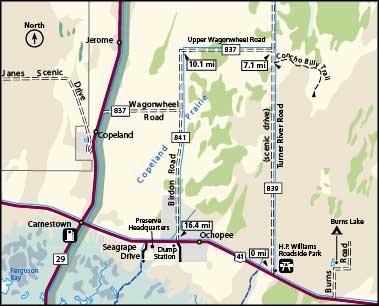
The Loop Trail is a scenic 27-mile drive that travels through pine forests, a dwarf cypress forest and several deep strands. The Turner River-Wagonwheel-Birdon Roads Loop is a 17-mile tour of open prairies and some popular wading bird feeding and nesting areas. There are private properties located along both of these loop roads, be sure you are on public property when you stop and get out. You also always want to be alert to the presence of alligators almost everywhere.
The Oasis Visitor Center is located on US Highway 41, halfway between Naples and Miami. The visitor center is open 9 am to 4:30 pm every day except Christmas. At the visitor center you'll find an introductory video to the preserve, educational materials and exhibits about the natural and cultural history of the area. Preserve Headquarters is also located on US Highway 41, about 5 miles east of the intersection with State Road 29.
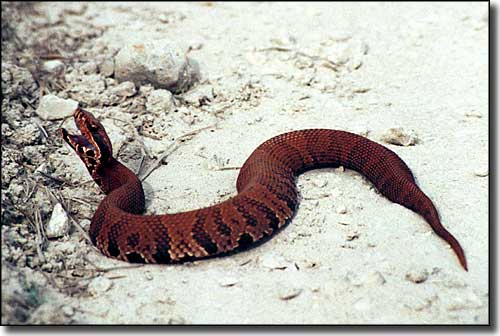
A cottonmouth, one of several venomous snakes to be found at Big Cypress National Preserve
Photo of cottonmouth courtesy of Tristan Loper, CCA-by-SA 3.0 License
Photo of rock outcroppings courtesy of USGS
Map of Turner River-Wagonwheel-Birdon Roads courtesy of the National Park Service
